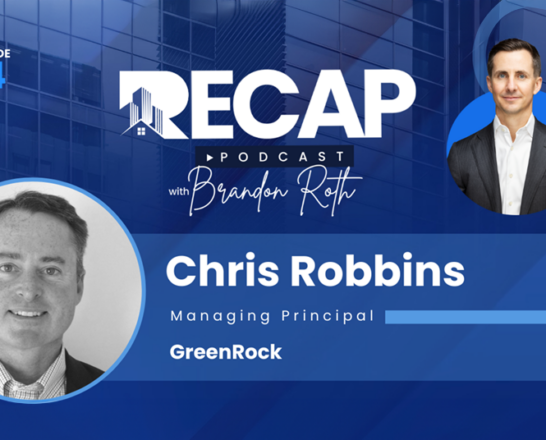The bankruptcies of Dallas’ Edgemere and three other Texas continuing care retirement communities raise questions about the viability of a business model that requires hefty entrance fees. The entrance fee guarantees residents a spot for life at the facility, no matter the level of care they require in the future, whether that be assisted living, memory care or skilled nursing. And a percentage of the fee is often refundable to the resident or their heirs. But CCRCs are capital-intensive projects that generally require bonds to fund construction. That means communities that use the entrance fee model must not only keep up with debt obligations to bondholders and regular maintenance costs but also with the cycle of refunding deposits as residents move out or die. Here’s what you need to know about CCRCs, from how they make money to how they’re regulated and why some end up in bankruptcy court.
How CCRCs work
- For residents who pay an entrance fee to enter a CCRC, the cost is offset by the fact that their monthly fees either don’t increase or increase very little as higher levels of care are needed. Supporters say it provides better predictability of expenses and saves money over one’s life. Often, a percentage of the entrance fee is refundable to the resident when he or she moves out or to the heirs when they die, provided a new resident moves in and pays a new entrance fee. If a CCRC is struggling to fill units, that can take years.
- Regulations vary by state, but in Texas, CCRCs can use entrance fee payments for operating expenses and debt obligations after reaching a certain level of viability.
- The average CCRC entrance fee in the Dallas market is $435,254, according to data from the National Investment Center for Seniors Housing in Maryland.
- Some CCRCs don’t require an upfront fee but charge a monthly rate. Those payments are typically higher.
- At the end of 2021, NIC data showed that about 74% of CCRC independent living units in the U.S. were paid for with entrance fees vs. about 26% collecting monthly rent. When residents move to assisted living, the percentage that relied on entrance fees dropped to 55%, then went up slightly to 60% for memory care and dropped again to 46% for nursing care. That’s because if a resident moves directly into a higher stage of care, an entrance fee is often not required.
- Thomas Califano, a partner in law firm Sidley Austin’s restructuring group, said he doesn’t think the CCRC model would be viable without entrance deposits to fund operations. CCRCs are capital-intensive projects requiring a large campus with amenities and high levels of care, including skilled nursing. “It’s not a cheap way to age,” he said. “A CCRC wouldn’t work if the entrance fees were set aside completely. It needs to be done to pay down the bond debt.”
- CCRCs typically make money from entrance fees, monthly fees and fees for optional services like barber and beauty services. CCRCs with high occupancy rates can generally sustain a community with monthly fees and other charges generated from activities like buying meals. But when occupancy drops from increased competition and events like a global pandemic, the model starts to crumble.
- CCRCs can either be for-profit or not-for-profit, with the vast majority of lifecare contract communities being not-for-profit. Not-for-profit CCRCs are generally required to operate for charitable purposes and are therefore less likely to ask a resident to vacate if they run out of funds. For example, the not-for-profit Stayton at Museum Way in Fort Worth says on its website that for residents who outlive their resources, the Stayton has a financial hardship protection plan that lets them stay.
- CCRCs that succeed aren’t too heavily weighted toward any of the four levels of care or toward entrance fee or fee-for-service payments, said Michael Lincoln, principal at GreenRock Capital in California, which provides health care and commercial real estate owners with capital for development. “Diversification goes a long way to managing operating risk,” he said.
How CCRCs are regulated
- There is no federal oversight for CCRCs. The Texas Department of Insurance is the state’s main regulator of CCRCs, and the attorney general’s office is its enforcement arm.
- Some states require CCRCs to keep a certain level of cash reserves so they can pay back resident refunds if they run into financial distress or a catastrophic event. Texas does not. “I think most residents feel like that money is always going to be there. And if everything works great, then it will be,” said David Drumm, a partner at Dallas-based law firm Carrington Coleman, who represents a family in the Edgemere bankruptcy case. “But if the stability can’t be maintained and the landlords and secured creditors grab all assets, then what?”
- Katherine Pearson, a professor of elder law at Penn State University’s Dickinson Law School and a national expert on CCRCs, said Texas is in the middle of the pack when it comes to how closely the state regulates CCRCs. Texas has a disclosure-based regulation system that requires CCRCs to provide consumers with accurate information about how they operate, what their contract provides and how they handle finances.
- CCRCs with contracts requiring entrance fees exceeding three months’ payments are required to be licensed by TDI, said agency spokesman Ben Gonzalez. There are 36 licensed CCRCs in Texas. TDI reviews CCRC disclosure and financial statements annually, he said.
- When a CCRC runs into financial difficulties, TDI works with its owner and management to address concerns and protect residents, Gonzalez said. That can include placing the CCRC under supervision, where certain actions require prior approval by TDI, he said. If a CCRC files for bankruptcy, the attorney general’s office represents TDI and advocates for “approval of a bankruptcy plan that ensures current residents’ contracts are honored,” he said.
How CCRS run into trouble
- CCRCs require significant investment for initial construction, renovations, apartment updates, fitness centers, spas, swimming pools and skilled professionals, among other things. Edgemere’s 2021 budget included in its bankruptcy filing shows categories for general and administrative, maintenance, housekeeping, dietary, resident care and leisure services for total operating expenses of $32.7 million.
- To raise capital to build a CCRC, bonds are sold to investors to pay for construction. The community then must make payments on its debt from its revenue, meaning the CCRC must constantly maintain high occupancy. CCRCs should aim for occupancy of at least 90%, but higher is better, said Beth Mace, chief economist with NIC.
- That reliance on keeping occupancy high makes CCRCs vulnerable to any change in occupancy, Califano said.
- CCRCs have also been hurt by overbuilding in preparation for aging baby boomers, especially assisted living units, leading to increased competition, Mace said. “It’s too much inventory for the market to absorb,” she said. “But it’s really dependent on the geography.” Dallas has 19 properties under construction that NIC is tracking, Mace said. That’s lower than the 41 under construction in 2015 but higher than the national average.
How the pandemic pushed some to the brink
- CCRCs struggling to maintain occupancy before COVID fell even farther behind during the pandemic. Some couldn’t keep up with payments to bondholders or got behind on renting out units to keep up the cycle of reimbursing residents.
- Forty-two percent of health care organizations, including long-term care organizations, defaulted on bond or loan covenants in the past 12 months, according to BDO’s 2022 Healthcare CFO Survey. Another 25% said they were worried about defaulting in the coming year.
- Once a CCRC falls behind on occupancy, it’s difficult to recover, Califano said. “If you’re six months behind on people moving in, that can have a negative impact that you don’t catch up on,” he said.
- The average occupancy rate for 23 CCRCs in Dallas fell from 85% in the first three months of 2020 to 79.9% for the same period in 2022, said NIC’s Mace.
What happens to residents in bankruptcies
- Current CCRC residents aren’t considered creditors in bankruptcy cases because an entrance fee refund hasn’t been triggered yet. They typically want to protect their lifecare contracts and future refund.
- Former residents or their heirs are generally considered unsecured creditors who must work to protect their full entrance fee refund. They don’t have the option to vote on the bankruptcy plan and are generally represented by an unsecured creditors’ committee, with attorney fees covered by the CCRC.
- There are cases where residents or their heirs lose some or all of their entrance fees, but attorneys who handle such cases say operators and bondholders generally want to work out a plan where everyone gets paid. If heirs aren’t refunded, there’s a loss of trust in the model, and occupancy can plummet. It’s rare for former residents and their heirs to get nothing back, but there are cases where they receive only 10% to 15%, said Kristina Wesch, co-chair of the restructuring and distressed transactions practice group at Wiggin and Dana, which has offices in Connecticut, New York, Pennsylvania, Florida and Washington, D.C.
- Bond claims often have a higher priority in payment than unsecured refund claims of residents and their heirs because bond debt is typically secured by a mortgage or other security interest in assets of the CCRC, Wesch said. What unsecured creditors get back is dependent on how financially secure the CCRC is when it comes out of bankruptcy, she said.
- Califano said he has seen CCRCs come out of Chapter 11 and thrive. In the 1980s and 1990s, there were CCRC bankruptcies where residents were evicted. But Califano and Pearson said they don’t know of any recent cases where residents were displaced.
- CCRCs are often looking to reduce debt, which takes about six to eight months, or to sell to a new owner, which generally takes longer, depending on the state’s regulatory process.
What’s on the horizon
- GreenRock’s Lincoln said he could see consolidation among CCRC operators. “Operators look for size and scale to spread operating costs across a greater population and greater geographic region and that helps with access to capital,” he said.
- Pearson said she can see CCRCs moving toward a fee-for-service model to eliminate concerns about losing entrance fees. “The unfortunate part of that for the communities is that the entrance fee model is what allows them to have a well-funded, well-capitalized operation,” she said.




